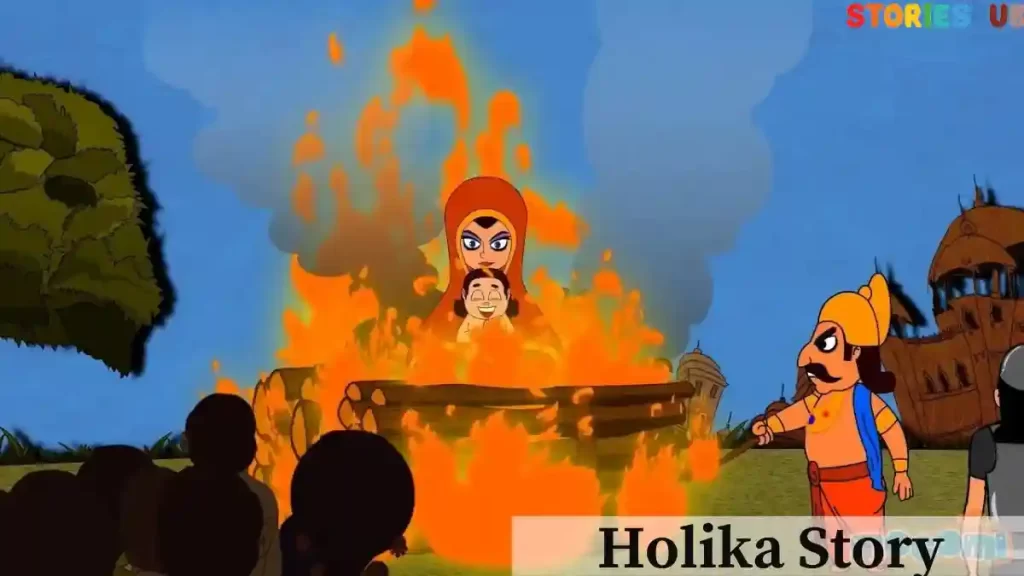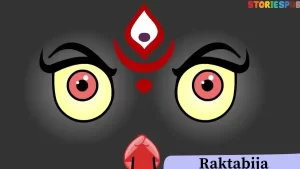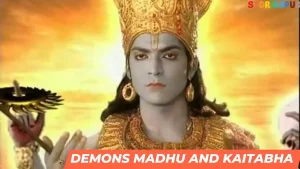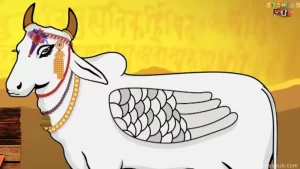Holika Story: Hindu Mythology

In the colorful and enchanting realm of Hindu mythology, we find the story of Holika, a character whose legacy is deeply interwoven with the celebration of Holi, the festival of colors. Holika’s tale is one of power, deception, and ultimately, the triumph of good over evil.
Holika was the sister of the powerful and demon king Hiranyakashipu. She was a beautiful yet dangerous woman, with a unique boon granted to her by the gods. This boon made her immune to fire, allowing her to walk through flames unharmed. But as with all such divine gifts, this power came with a curse.
The curse was that the boon would only protect her if she used her power for noble deeds. It would become useless if she ever misused it for evil purposes. The story of Holika is one of how the misuse of power can lead to one’s own destruction.
Hiranyakashipu was a tyrannical king who desired to become immortal and invincible. He had earned a boon from Lord Brahma, which granted him immense power and near invincibility. This boon made it nearly impossible for him to be killed, neither by human nor animal, during the day or night, inside or outside, and by no weapon.
Unfortunately, this power went to Hiranyakashipu’s head, and he began to oppress his subjects, demanding that they worship him as the supreme being. However, his own son, Prahlada, remained a steadfast devotee of Lord Vishnu, the preserver of the universe in Hindu mythology. This defiance infuriated Hiranyakashipu, and he tried repeatedly to convince his son to abandon his devotion to Lord Vishnu. However, Prahlada’s faith remained unwavering. This enraged the king even further, and he decided to use any means necessary to eliminate his son’s belief in Vishnu.
Hiranyakashipu subjected Prahlada to various tortures, but the boy’s devotion to Vishnu protected him from harm every time. The king grew desperate, and that’s when he sought the help of his sister, Holika.
Holika, with her unique power, devised a plan to kill Prahlada. She suggested that they trick the boy into sitting on a pyre with her. With her immunity to fire, she would emerge unscathed, while Prahlada would perish in the flames. Hiranyakashipu agreed to the plan, believing it to be foolproof.
The day arrived when the sinister plan was to be executed. Holika, wearing a special cloak that protected her from the fire, led Prahlada to the pyre. As they sat down, the fire was lit, and the flames began to consume everything in their path.
The onlookers held their breath, fearing for Prahlada’s life. But then, something miraculous happened. As the flames roared around them, a strong gust of wind blew through the area, tearing the protective cloak from Holika and wrapping it around Prahlada instead.
Holika’s boon failed her, for she had misused it for evil purposes. She was engulfed by the very flames she thought she could control, while Prahlada remained unharmed, protected by his unwavering devotion and the cloak that now shielded him from the flames. The people watched in awe as the young boy emerged from the fire, unscathed and stronger in his faith than ever before.
This miraculous event made Holika famous in Hindu mythology. The story of her demise, despite her unique powers, became a symbol of the victory of good over evil. It demonstrated that even the mightiest of powers could not triumph over righteousness.
The festival of Holika Dahan is celebrated every year to commemorate this event. On the eve of Holi, a major Hindu festival of colors, people gather around large bonfires to burn effigies of Holika, symbolizing the destruction of evil. The flames of the bonfire represent the cleansing power of fire, purifying the surroundings and signifying the victory of good over evil.
Though Holika’s actions were driven by malevolent intentions, some people choose to respect her like a goddess and call her mother, as she inadvertently became a symbol of sacrifice. The story of Holika teaches us valuable lessons about the consequences of misusing power and the importance of unwavering devotion.
Holika’s tale has been passed down through generations, and it continues to resonate in the hearts of those who hear it. The story serves as a reminder that even the strongest of powers can be rendered powerless in the face of righteousness, and that faith and devotion can triumph over the most daunting challenges.
The fame of Holika and her story has reached far and wide, transcending boundaries and cultures. Her tale serves as an inspiration to stand up against evil and believe in the power of goodness.
The celebration of Holika Dahan is a testament to the enduring relevance and power of her story. As people gather around the bonfire, they remember the lessons of Holika’s tale, and it serves as an opportunity for reflection and renewal.
Holika Dahan also marks the beginning of the joyous festival of Holi. The following day, people come together to celebrate with colors, symbolizing the vibrancy and diversity of life. This transition from the somber ritual of Holika Dahan to the exuberant festivities of Holi serves as a reminder that after the darkness of evil is vanquished, the light of goodness and happiness prevails.
Throughout the ages, the story of Holika has been retold and adapted, making its way into the hearts and minds of countless people. It has become an integral part of Hindu mythology and tradition, serving as a powerful reminder of the eternal struggle between good and evil.
In this ever-changing world, the tale of Holika and Prahlada remains a timeless beacon of hope, inspiring people to stand firm in their beliefs and face adversity with courage and conviction. The celebration of Holika Dahan and Holi continues to bring people together, transcending cultural and geographical boundaries, to share in the message of unity and the triumph of good over evil.
And so, the story of Holika, the woman with the unique power and the tragic curse, continues to be told, passed down from one generation to the next. It is a story of sacrifice, devotion, and the ultimate victory of righteousness over malice. The tale of Holika serves as a constant reminder that even in the darkest of times, the light of goodness will always shine through, guiding us towards a better and more just world. It is a story that will forever be etched in the annals of Hindu mythology, a timeless lesson for humanity to treasure and remember.
As families gather around the bonfire during Holika Dahan, the story of Holika and Prahlada is recounted, reinforcing the values of faith, courage, and righteousness. Parents share this tale with their children, passing on the wisdom and lessons embedded within the narrative. The story serves not only as a cautionary tale about the dangers of misusing power but also as a celebration of the human spirit’s ability to persevere in the face of adversity.
In the modern world, where power is often wielded with impunity, the story of Holika and her tragic fate serves as a powerful reminder of the importance of humility and the consequences of hubris. Her tale underscores the idea that even the mightiest of powers can be brought low by a single act of defiance rooted in righteousness.
The story of Holika continues to be told, generation after generation, as a timeless testament to the power of goodness and the strength of human resilience. It serves as a beacon of hope in a world where the struggle between good and evil persists, reminding us that even in the darkest of times, the light of righteousness will ultimately prevail.
And so, the story of Holika, the woman who once walked through fire unharmed, lives on in the hearts and minds of those who hear her tale.
Hey kids, how much did you like The Holika Story: Hindu Mythology? Please share your view in the comment box. Also, please share this story with your friends on social media so they can also enjoy it, and for more such Hindu Mythology, , please bookmark storiespub.com.
Check out other stories that we have:



